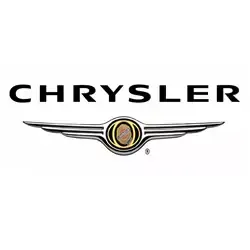Chrysler Concorde Tire Pressure
Most common recommended tire pressure for Chrysler Concorde can range from 30 psi to 32 psi depending on year of production, trim and OEM tire size, but it maybe different for older models. It is imperative to confirm the exact tire inflation for your Chrysler Concorde to ensure safety on the road. Always refer to your vehicle owner's manual for the correct tire pressure designated by vehicle's manufacturer.
Select your Chrysler Concorde production year to see its recommended tire inflation.
| Model Year | Front Tires | Rear Tires |
|---|---|---|
| 2004 Chrysler Concorde | 32 psi | 32 psi |
| 2003 Chrysler Concorde | 30 - 32 psi | 30 - 32 psi |
| 2002 Chrysler Concorde | 32 psi | 32 psi |
| 2001 Chrysler Concorde | 32 psi | 32 psi |
Recommended Tire Pressure for Chrysler Concorde
Maintaining the recommended tire pressure for the Chrysler Concorde is crucial for several reasons that impact safety, performance, and economy. Firstly, proper tire inflation ensures optimal contact with the road, which improves the vehicle's handling and stability, particularly important at higher speeds or during adverse driving conditions. This enhanced grip significantly contributes to driver and passenger safety by reducing stopping distances and improving vehicle responsiveness to steering inputs. Secondly, tires at the correct pressure level are less prone to premature wear and damage. Over- or under-inflated tires can lead to uneven tread wear, reducing the lifespan of the tires and necessitating more frequent replacements. Furthermore, adequately inflated tires optimize fuel efficiency by minimizing rolling resistance; when tires are under-inflated, the vehicle's engine must work harder to propel it forward, leading to increased fuel consumption and higher emissions. Therefore, regularly checking and maintaining the tire pressure at the levels recommended by Chrysler for the Concorde not only ensures the safety of its occupants but also contributes to the vehicle's longevity and operational cost-efficiency.

All listed guides, data and/or calculations are for informational purposes only. TirePressure.com does not warrant or make any representations regarding the accuracy of or the results of the use of this information. Always refer to vehicle owner's manual for the correct tire pressure configuration.